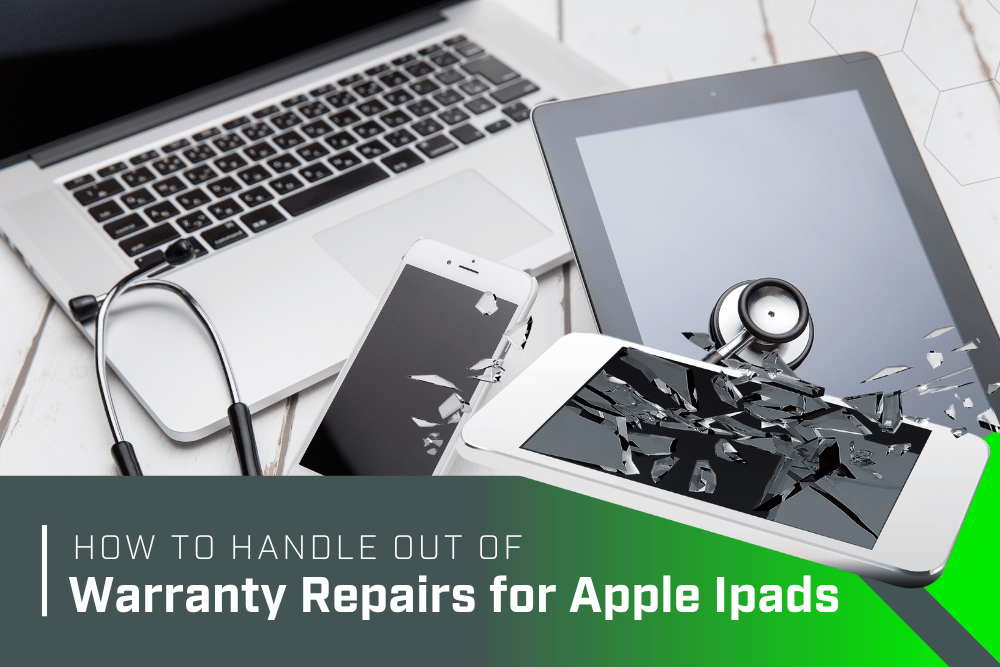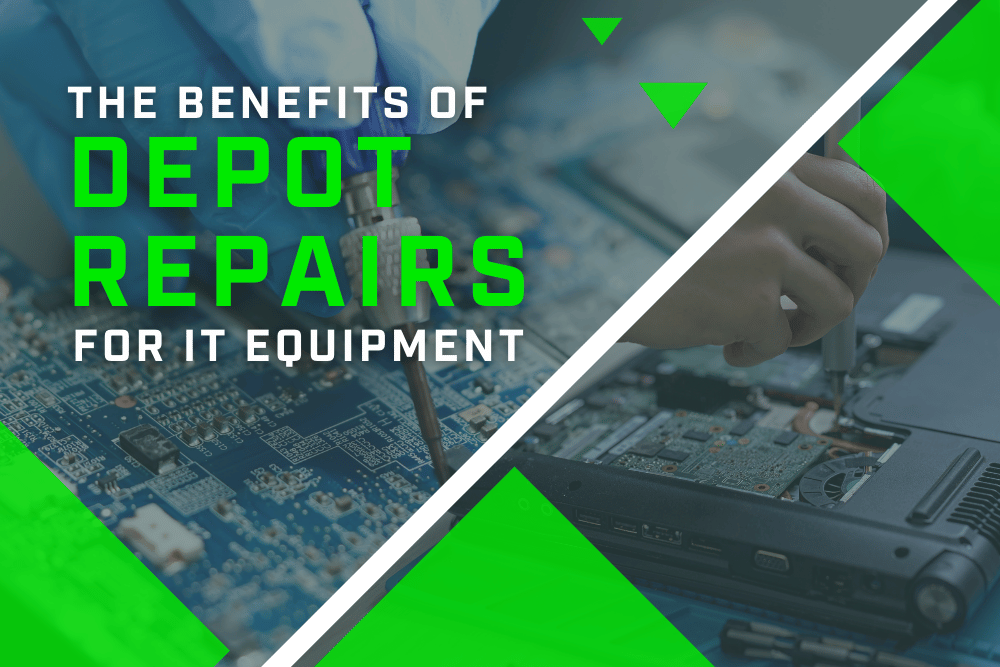Depot Repair Companies: How to Choose One
Published on June 27, 2013
This post details a methodical way to select a depot repair company.
This is the time of year that many companies take a deep breath and start planning for the future. The economy is still down and budgets are tight, and many people are looking for ways to save money on their hardware repair costs.
Some companies are evaluating their current Depot Repair contracts, or perhaps considering changing from expensive, on-site repair to a depot model. Others are looking to switch from relying solely on repair by the original equipment manufacturers (OEMs) to more cost effective third parties.
What are some of the factors you should consider when choosing a depot repair company?
Quality! Quality! Quality!
Depot repairs can be an efficient and inexpensive way of maintaining your hardware, but the quality of the repair work is paramount.
References
Ask potential suppliers for references? Call a couple of them. Ask the supplier for names of lapsed customers – why don’t they do business together anymore? It may not be the fault of the supplier, but lapsed customers can have a story to tell.
How long have they been in business?
How many staff do they have and do they have the appropriate capacity to handle your repairs? You need to judge whether the company size is right for you. For example, if you have 500 repairs per month, then choosing a repair company with only four of five Technicians may not be wise. Similarly, if you select supplier has 100 Technicians then your value to them will not be high and you may not be valued as a customer.
What’s their warranty?
OEMs are notorious for having poor warranties on their out of warranty repairs, some go as low as 30 days! Ask for six months – you need for a supplier that will stand behind their work.
Does the warranty cover the complete unit; or just the repaired fault? Again, some companies will just warranty the specific fix and charge you again if a repaired item develops a different fault, and that’s just not cool!
Do potential suppliers have repair procedures in place? Do they track repeat failures and will they alert you to any trends or developing problems with your equipment?
Major Factors That You Should Consider When Selecting a Depot Repair Company
Pricing
When selecting a Depot Repair company for your hardware repairs an important element of the decision is pricing. The depot repair model can offer excellent value, but still you need to choose a system that is right for you. Evaluate the different methods available and ask providers to give you repair pricing based on different methods.
The common pricing methods used in the industry include the following:
Time and Material
This is a method often preferred by the Original Equipment Manufacturers (OEMs). You ship defective equipment to them then they will evaluate it and provide a repair price. Repair pricing can be based on labor rates from $80 to $200 plus per hour and they may charge an evaluation fee if you decide not to proceed with the repair. In addition the T&M process may not be manageable if you have large volume of repair work.
Contract Method
With this pricing model you pay a certain amount per month for each item of hardware that you place under the repair contract. Typical pricing ranges from a few dollars for a barcode scanner to $20 per month plus for high end mobile computers or other expensive IT equipment.
The great advantage to this method is that your total repair costs are known upfront. Anything that goes wrong with the equipment listed in the contract is covered and the equipment will be repaired for no further charges.
However, this method is typically an expensive way of repairing your equipment. When pricing this way, the repair company has to assume the worst in terms of how much equipment will need repairing. Each type of equipment has some norms as to what percentage of them will go bad in any one year, but still the repair company will have to err on the safe side and price the contract so that they don’t lose money.
Another disadvantage to this method is that you must maintain an accurate record (serial numbers) of the equipment that you want covered, which can be tricky with hardware spread far and wide in the field. Any equipment that you don’t list upfront with the repair company may not be covered.
Again, this contract method may be popular with OEM’s and some third party repair companies as it can be most profitable for them!
Flat Rate Repairs
The flat rate repair pricing method is probably the most popular in the industry. The depot repair company charges a set amount per unit repaired and this includes all parts and labor.
The price is set up front and it varies depending on what is being repaired, but it can range from $70 to $100 for some barcode, POS hardware or monitor repairs, to a few hundred dollars for high end label printers. Typically the price is around 15% to 40% of the cost of buying replacement equipment, so it offers excellent value.
Normally these repairs are not covered by a formal contract and you pay only for what you send in to have repaired. If your repair needs change, or if you’re unhappy with the provider, then you can just stop repairs and move on elsewhere.
Turnaround Time (TAT)
What TAT do you need and expect? Check that potential suppliers understand and can commit to meeting your requirements.
Experience
Does the depot repair company have experience in your industry and with your equipment? Can they demonstrate knowledge of your hardware? Original Equipment Manufacturers often say that they are the only reliable source of repairs, but that is normally often the case. A reliable third party repair company may offer great service with significant cost savings over the manufacturer.
Selection Criteria for Choosing a Depot Repair Company: Inventory Management vs. Managed Services of Hardware
Inventory Management and Logistics
Benefits:
Of increasing importance in the Depot Repair field is where the selected vendor also provides Logistics or Inventory Management of your hardware.
With this model the third party, Depot Repair Company is not only responsible for maintenance of your hardware but they will also store it and ship it to your remote end users or stores. The defective hardware is returned from the field directly to the vendor for repair and then it is placed back in the repaired pool of equipment for use again.
This offers several benefits including:
- Less of your staff handling IT hardware with the corresponding significant cost savings compared to doing this in-house. This also allows you to concentrate on your core company business, which is generally not repairing IT hardware!
- Professional handling, storage, configuration and maintenance of your hardware by the depot repair company.
- Defective equipment is repaired and re-used, which offers great cost savings over replacing broken hardware with new equipment. Where necessary, your provider should be able to source refurbished equipment too at cost effective prices.
- The Depot Repair provider will be able to process repairs for you that are covered by the manufacturers’ warranty. Even if they cannot repair the manufacturers’ equipment in-house, they can provide added value by processing these repairs with the manufacturer for you.
- With their broader knowledge of the market, your provider will be able to notify you of trends or issues in the IT field. Are there recalls or common problems with the hardware you use? Your supplier may well know of problems that their other customers experience and can use that knowledge to benefit you!
If you wish to outsource these logistics to a third party then you need to have confidence in your supplier. They may be located hundreds of miles from you and you cannot watch over them every day, so make sure the following items are agreed to beforehand:
- Ask for regular (at least weekly) reports from your supplier as to what’s been repaired and what their equipment stock is.
- What will the depot charge for managing your inventory? Apart from the cost of shipping equipment the charges shouldn’t be very high; many depot repair companies view inventory management as a way to add value to their relationship with their customers and strive to keep costs low.
- Determine the process for sending equipment into the field – how does the vendor know what and where to send equipment? Who is responsible for ensuring that defective equipment is returned to the depot?
- How are manufacturer’s warranties handled? Again, suppliers may be authorized to repair manufacturer’s equipment or even if they’re not they may process the repair at little or no cost as a way to add value to a customer.
This concludes our guide to choosing a depot repair company. Did we miss any factors? Please add any insights on this process that you may have in the comments section – thanks!




